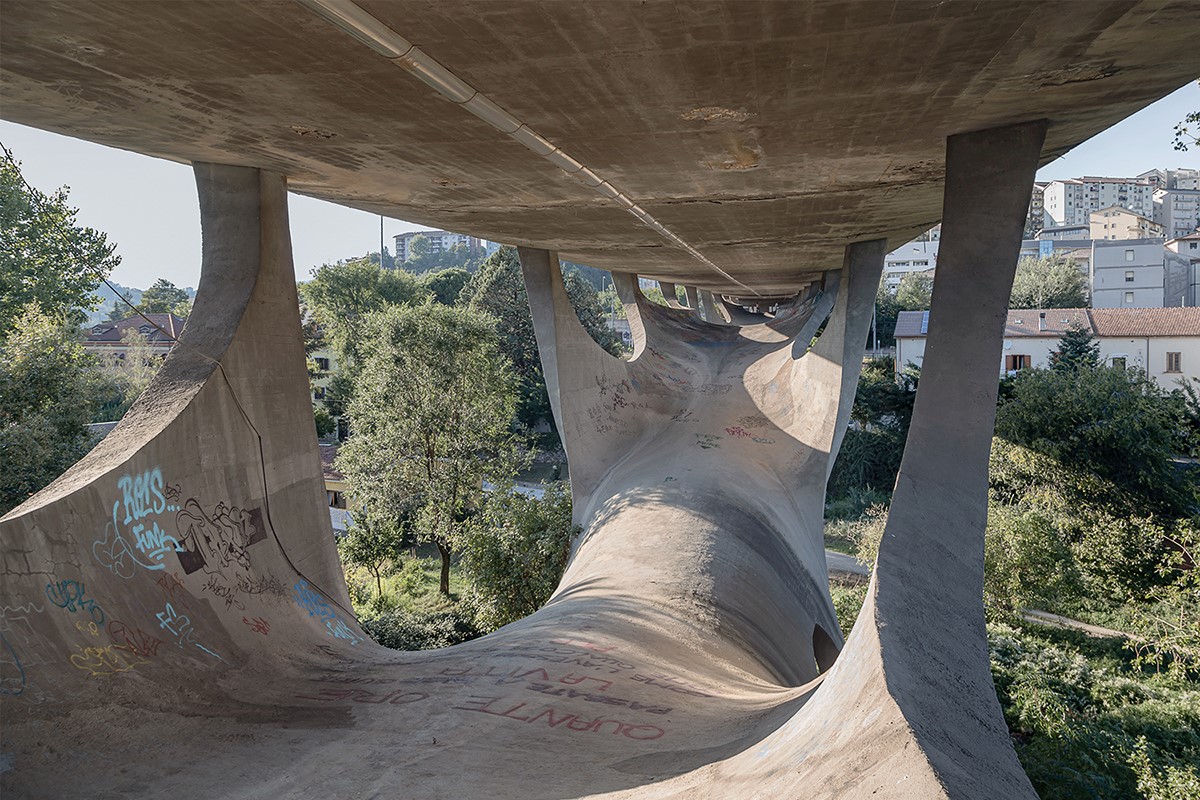|
Sergio Musmeci: The Form as the Unknown |
L. Ingold 2016 - 2021 |

Ponte sul Basento, Potenza, 1967-1975 (Photograph: Lukas Ingold)
The work of the Italian engineer Sergio Musmeci (1926-1981) encompasses a remarkable spectrum of designs for structures. Most of these structures were conceived to be built in reinforced concrete, mainly due to the specific conditions in Italy during the postwar period. Musmeciís multifaceted oeuvre represents, in an exceptional way, the notion of an interdependence of architectural and structural considerations. Therefore, his explorations were based on the idea that the form of a structure is directly related to the configuration of the equilibrium of forces. Such a design approach entailed the development of various sophisticated methods that employed mathematical, physical and computational modeling procedures. However, the origins of the guiding ideas underlying these design concepts and methods can be found mainly outside the fields of architecture and structural engineering, as Musmeciís creativity was driven by a keen curiosity to acquire knowledge from various scientific, technological and cultural fields. The research focuses on Musmeciís fundamental assumption that, in the design process for a structure, not the internal stresses, but the form should be considered as the unknown, and scrutinizes how this principle informed his design activity. The systematic examination discerns the important developments related to his design concepts, provides thorough insights into the different methodological approaches and indicates the original sources of the various guiding ideas. The examination reveals that Musmeciís explorations were based on a strong entanglement between design practice and research activities, as well as a constant oscillation between theoretical and empirical approaches. In general, Musmeciís work allows the central questions on the methodology of structural design to be addressed and represents a crucial reference for constructing with limited material resources. Moreover, the developments associated with his career exemplify the major transformations that took place in the scene of architecture and structural engineering in Italy during the postwar period.
last modified 23.12.2022